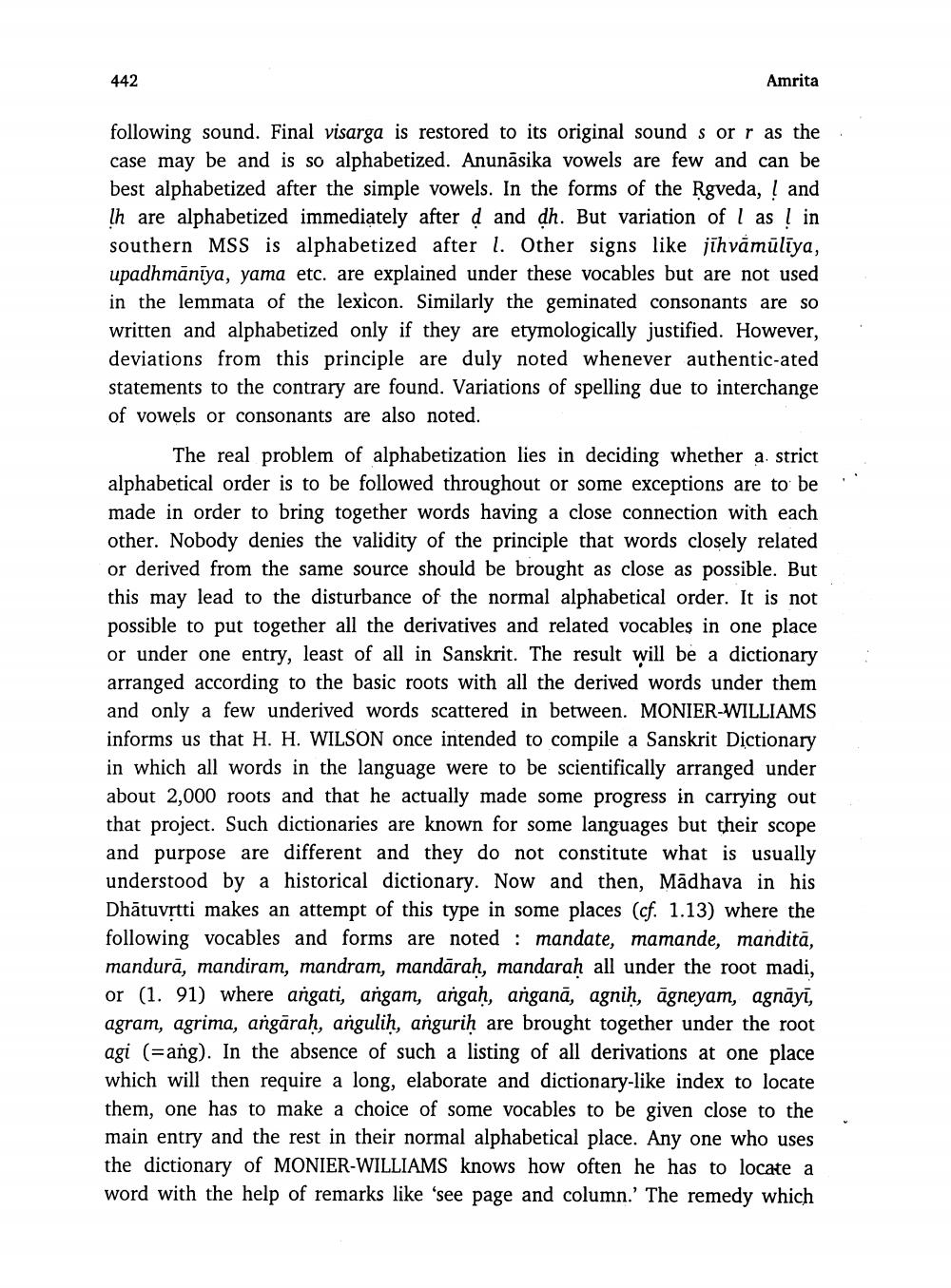________________
442
Amrita
following sound. Final visarga is restored to its original sound s orr as the case may be and is so alphabetized. Anunāsika vowels are few and can be best alphabetized after the simple vowels. In the forms of the Rgveda, ! and lh are alphabetized immediately after d and dh. But variation of l as ! in southern MSS is alphabetized after I. Other signs like jihvámūliya, upadhmānīya, yama etc. are explained under these vocables but are not used in the lemmata of the lexicon. Similarly the geminated consonants are so written and alphabetized only if they are etymologically justified. However, deviations from this principle are duly noted whenever authentic-ated statements to the contrary are found. Variations of spelling due to interchange of vowels or consonants are also noted.
The real problem of alphabetization lies in deciding whether a. strict alphabetical order is to be followed throughout or some exceptions are to be made in order to bring together words having a close connection with each other. Nobody denies the validity of the principle that words closely related or derived from the same source should be brought as close as possible. But this may lead to the disturbance of the normal alphabetical order. It is not possible to put together all the derivatives and related vocables in one place or under one entry, least of all in Sanskrit. The result will be a dictionary arranged according to the basic roots with all the derived words under them and only a few underived words scattered in between. MONIER-WILLIAMS informs us that H. H. WILSON once intended to compile a Sanskrit Dictionary in which all words in the language were to be scientifically arranged under about 2,000 roots and that he actually made some progress in carrying out that project. Such dictionaries are known for some languages but their scope and purpose are different and they do not constitute what is usually understood by a historical dictionary. Now and then, Madhava in his Dhātuvrtti makes an attempt of this type in some places (cf. 1.13) where the following vocables and forms are noted : mandate, mamande, mandită, mandurā, mandiram, mandram, mandārah, mandaraḥ all under the root madi, or (1. 91) where añgati, angam, angaḥ, anganā, agniḥ, āgneyam, agnāyī, agram, agrima, angārah, angulih, angurih are brought together under the root agi (=ang). In the absence of such a listing of all derivations at one place which will then require a long, elaborate and dictionary-like index to locate them, one has to make a choice of some vocables to be given close to the main entry and the rest in their normal alphabetical place. Any one who uses the dictionary of MONIER-WILLIAMS knows how often he has to locate a word with the help of remarks like 'see page and column.' The remedy which




